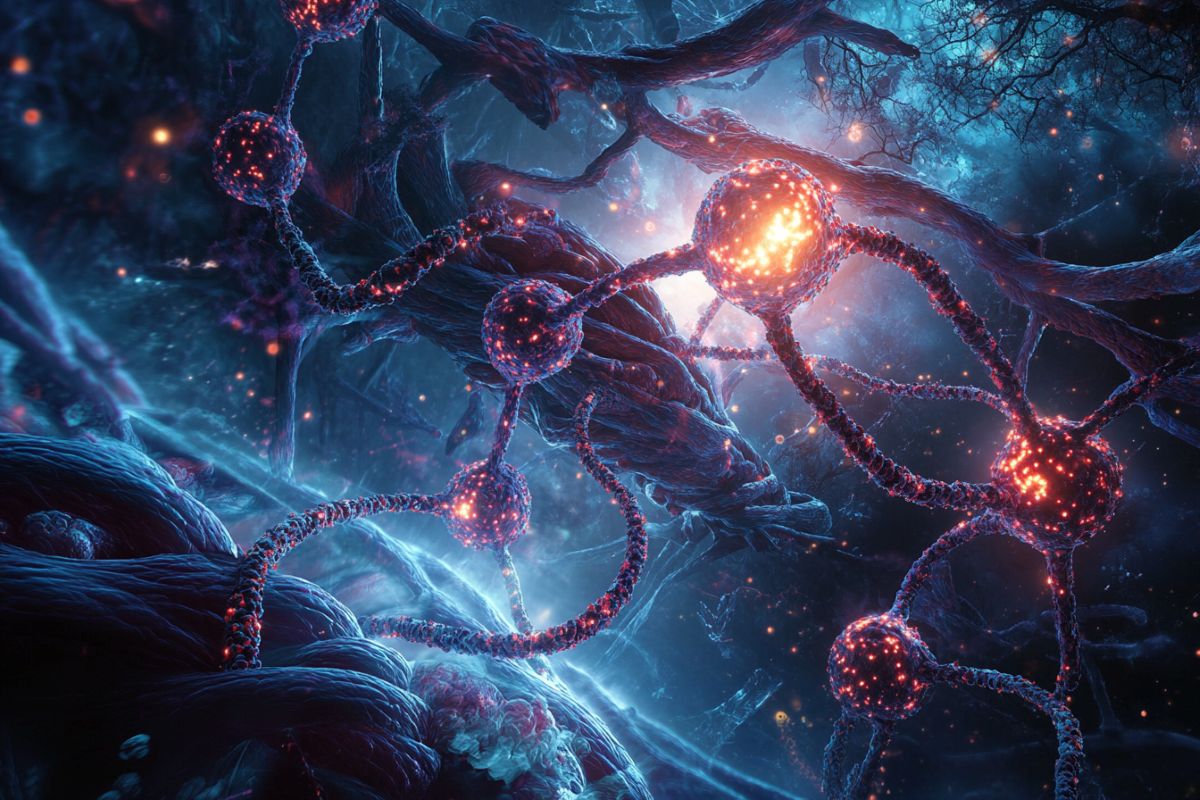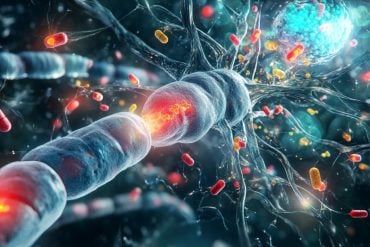Summary: Circular RNAs (circRNAs) are stable, ring-shaped molecules that play crucial roles in brain development, cognition, and long-term cellular regulation. Unlike typical RNA, they form closed loops that resist degradation, making them ideal for neurons.
New research reveals that the protein ELAV acts as a master regulator of circRNA production by slowing linear splicing and promoting back-splicing. This mechanism, discovered in fruit flies, may also be active in humans and could offer new insights into brain health and disease.
Key Facts:
- Stability Advantage: circRNAs are unusually stable due to their closed-loop structure, making them ideal for neurons.
- Regulatory Switch: The protein ELAV promotes circRNA formation by shifting RNA processing away from linear splicing.
- Potential Therapeutic Target: Since ELAV-like proteins exist in humans, manipulating this pathway could impact brain health or neurodegeneration.
Source: Max Planck Institute
Deep within our nerve cells, a molecule is at work that has no beginning and no end. Instead of a straight chain, as is it common for most RNA strands, it forms a closed loop.
Known as circular RNAs (circRNAs), these molecules are crucial for development, thought, and synaptic function, yet their high prevalence in neurons has long been a scientific mystery. How does the brain produce so many of them?

Now, Max Planck researchers from Freiburg have discovered a crucial mechanism that explains the remarkable abundance of circRNAs in the nervous system. The study reveals that the protein ELAV acts as a global master switch for the production of these molecules.
CircRNAs are found across all life forms. They are expressed in specific patterns during different developmental stages and in different cells – especially abundant in cells of the nervous system. While their roles are not as well-studied as normal, linear RNAs, circRNAs are known to be important in brain development, cognition, and even in conditions like neurodegeneration and addiction.
A stable ring with impact
The ring structure of circRNAs is crucial for their roles because it gives the molecules extreme stability. Unlike linear RNA molecules, circRNAs have no open ends that act as starting points for enzymes, which could rapidly degrade them. This longevity makes circRNAs ideal candidates for long-lasting regulatory tasks, especially in cells that don’t divide, such as neurons.
“They can control gene activity, act as sponges for other molecules, or even produce proteins. In our lab, we are fascinated by these RNAs and want to understand how they are regulated,” says Mengjin Shi, one of the first-authors of the study.
New research by the lab of Valérie Hilgers conducted on Drosophila embryos, identified the well-known RNA-binding protein ELAV as the key factor. The team found that in developing neurons, ELAV is the central mediator driving the widespread creation of circRNAs.
ELAV protein as a master switch
“When we removed the ELAV protein from the fruit fly embryos, the production of neuronal circRNAs plummeted, with a downregulation by over 75%. Conversely, when we introduced ELAV into cells that normally produce very few circRNAs, it triggered their formation. This confirms ELAV’s role as a potent regulator of circRNA expression,” says Valérie Hilgers.
The study also provides a clear mechanical insight into how ELAV performs this function: ELAV binds to pre-mRNA, the precursor to mature RNA. By binding there, ELAV slows down the standard process of “linear splicing,” which in turn promotes an alternative process called “back-splicing.”
This action effectively brings the two ends of the future circRNA molecule together, facilitating the creation of the closed loop.
“Our discovery suggests that neuronal circRNAs are not just byproducts of gene expression, but are purposefully generated to fulfill important functions.
“It enhances our understanding of the molecular basis of how the brain works by revealing how a specific type of molecule in neurons, circRNAs, is regulated. And ELAV is clearly a central part of that story,” says Valérie Hilgers
Given that proteins similar to ELAV are conserved from flies to humans, these findings strongly suggest a similar mechanism governs circRNA production also in the human brain.
By manipulating ELAV or similar proteins, the researchers could potentially influence circRNA levels providing new strategies to investigate the molecules’ role in brain health and neurodegenerative disorders.
About this genetics and neuroscience research news
Author: Marcus Rockoff
Source: Max Planck Institute
Contact: Marcus Rockoff – Max Planck Institute
Image: The image is credited to Neuroscience News
Original Research: Open access.
“ELAV mediates circular RNA biogenesis in neurons” by Mengjin Shi et al. Genes & Development
Abstract
ELAV mediates circular RNA biogenesis in neurons
Circular RNAs (circRNAs) arise from back-splicing of precursor RNAs and accumulate in the nervous systems of animals, where they are thought to regulate gene expression and synaptic function.
Here, we show that neuronal circRNA biosynthesis is mediated by the pan-neuronal RNA-binding protein ELAV.
In Drosophila embryos, we characterized the circRNA landscape in normal and elav mutant neurons.
We found that neuronal circRNAs are globally (>75%) depleted upon ELAV knockout, and induction of ELAV expression drives ectopic RNA circularization.
In brain tissue, ELAV binds to pre-mRNA introns flanking putative circRNAs and decreases efficiency of linear splicing in favor of intron pairing at reverse complementary matches, inducing circularization.
Together, our data demonstrate that ELAV directly modulates splicing decisions to generate the neuronal circRNA landscape.






